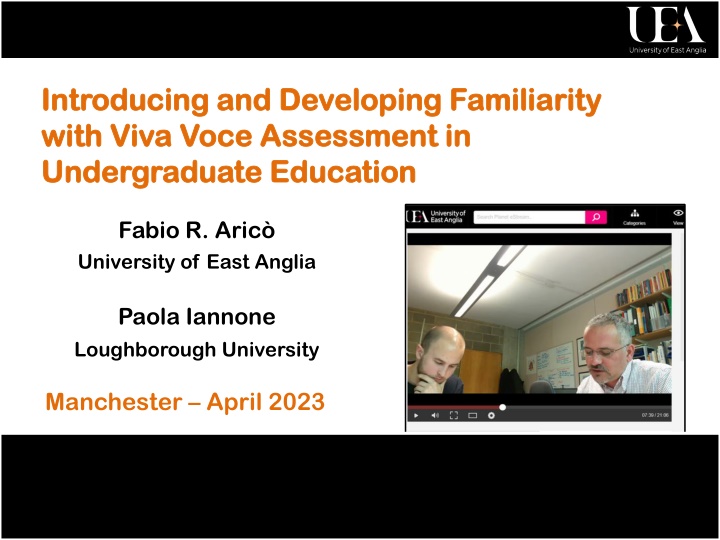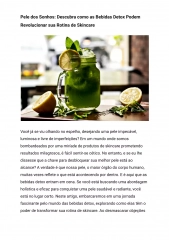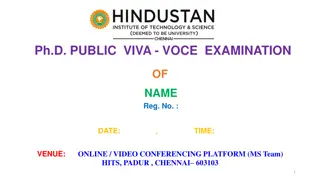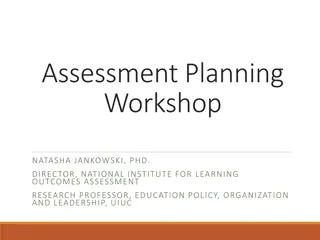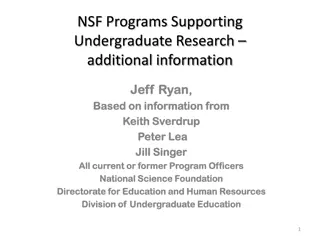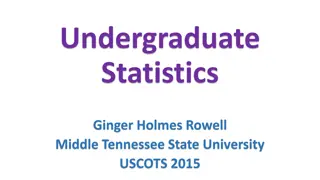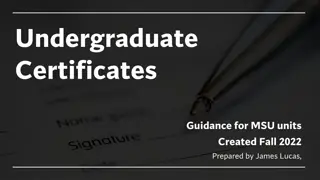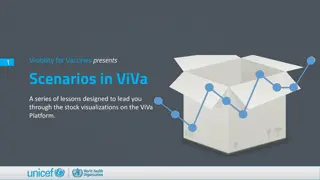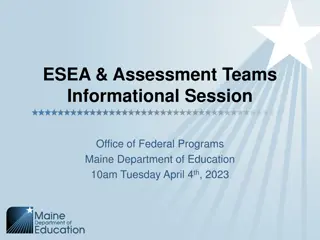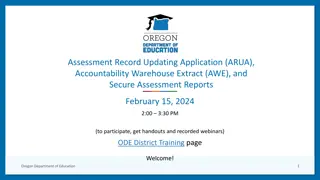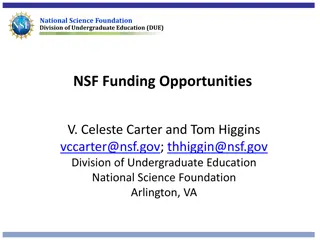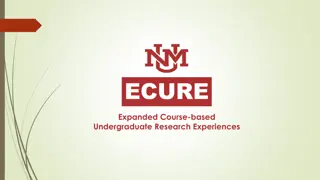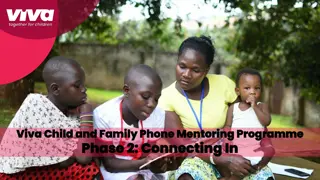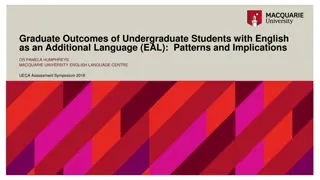Introducing Viva Voce Assessment in Undergraduate Education
The implementation and benefits of viva voce assessment in undergraduate education, presented by Fabio R. Aric. Learn about the wider context, motivation, and learning outcomes associated with this oral assessment method
Download Presentation

Please find below an Image/Link to download the presentation.
The content on the website is provided AS IS for your information and personal use only. It may not be sold, licensed, or shared on other websites without obtaining consent from the author.If you encounter any issues during the download, it is possible that the publisher has removed the file from their server.
You are allowed to download the files provided on this website for personal or commercial use, subject to the condition that they are used lawfully. All files are the property of their respective owners.
The content on the website is provided AS IS for your information and personal use only. It may not be sold, licensed, or shared on other websites without obtaining consent from the author.
E N D
Presentation Transcript
Introducing and Developing Familiarity Introducing and Developing Familiarity with Viva Voce Assessment in with Viva Voce Assessment in Undergraduate Education Undergraduate Education Fabio R. Aric University of East Anglia Paola Iannone Loughborough University Manchester April 2023
YOUR PRESENTER Fabio Aric UK National Teaching Fellow Professor of Higher Education and Economics Director of Centre for Higher Education Research Practice Policy and Scholarship University of East Anglia, Norwich, UK Research fields Higher Education policy and practice Oral Assessment Self-Assessment and Academic Self-Efficacy Twitter: @FabioArico 2
OUTLINE 1. Introduction to viva voce assessment and wider context 2. Implementing viva voce assessment: how to do it? 3. Research and Evaluation 3
Introduction to viva voce assessment: wider context 4
VIVA VOCE ASSESSMENT Uncommon Stray (2001) Traditional shift from oral to written exams in UK Hounsell et al. (2007) Why is it not used at UG level? Few examples: Nursing (Davis & Engward, 2018), Dentistry (Ganji, 2017), Business Studies (Pearce & Lee, 2009), Education (Carless, 2002), Mathematics (Iannone & Simpson, 2012) Unresearched Dobson (2008) not conceptualised in literature Needed EconomicsNetwork Surveys (2018-20) communication to non-economists creativity and imaginative ability 5
VIVA VOCE ASSESSMENT We should go back to the Middle Ages Assessment Adside (asside ) = sit next to/near to somebody (but also, stand by somebody) to conduct a viva voce exam! 6
MOTIVATION(S) My Experience I was trained this way, and I experienced the benefits on my own skin. I want to give my students the same chance. Employability more articulate in job interviews. Reflect on the benefit this can bring to students being Academic Integrity new challenges to assessment design. Open-book exams, Essay Mills, Artificial Intelligence pose LEARNING OUTCOMES and then reflecting on the best way to assess them. All the above boils down to re-thinking Learning Outcomes 7
My Experience I am Italian and I trained at an Italian University Backward: Teaching practice in Italy was more didactic Forward: For the majority of disciplines, every final exam is composed of a written + viva voce component I believe the viva voce component is what shapes Italian students critical ability and discussion skills I strongly believe we should make better use of viva voce assessment. 8
Employability When I interview graduates for a job at ONS, I do not look at their technical skills to begin with. I just ask myself: Can I send this person to go and brief the Prime Minister about the most recent economic statistics in six months from now? Jonathan Athow Former Deputy National Statistician and Director General - Office for National Statistics - UK Director General Customer Strategy and Tax Design - HM Revenue and Customs - UK 9
Learning Outcomes INDIVIDUAL PRESENTATION EVALUATIVE CONVERSATION A presentation is not a viva voce power dynamics are different Authenticity what could be closer to a job interview? Find your sweet spot: what LO are you targeting? 10
Implementing viva voce assessment: how to do it? 11
HISTORY of ECONOMIC THOUGHT (HET) Context: UG Year 2 optional/elective module/course Enrolment: 70 (2017-18), 50 (2018-19), 26 (2019-20), 41 (2020-21), 36 (2021-22), 57 (2022-23) Delivery: lectures (reading and commenting original texts) seminars (more readings, ideally student-led) Content: Petty, Smith, Ricardo, Marx, Bentham, Mill & Marginalists, Hayek & Austrians, Keynes, Friedman, McCloskey, Sudgen Challenges: non-technical, so tests and exams are pointless want to develop critical thinking, ability to discuss. 12
ASSESSMENT DESIGN 1.0 1 (30%) 2 (40%) 3 (30%) group video presentation individual critical essay individual evaluative conversation feed-forward engaging students process, not end-point Carless & Boud (2018) Winstone & Carless (2019) using different media to communicate developing research and critical skills engaging in discussion - interview skills 13
ASSESSMENT DESIGN 2.0 feed-forward 10% 15% 20% 25% 30% Viva Voce 1 Viva Voce 2 Viva Voce 3 Viva Voce 4 Research Report one question known in advance list of questions known in advance no question known in advance, only topics response to feedback plus more questions bullet-point list of findings on a topic end of viva survey end of viva survey entry survey end of viva survey end of viva survey plus exit survey 14
ASSESSMENT DESIGN 3.0 30% 20% 25% Viva Voce 2 Research Report Viva Voce 1 Viva Voce 3 OPTION 1 short-report 25% no question known in advance, only topics bullet-point list of findings on a topic list of questions known in advance response to feedback plus more questions OPTION 2 long-report 50% End of assessment 15
HOW TO DO IT? Algorithm 1. Block time-slots according to need 2. Set shared Excel with time-slots, linked to VLE OR use software (i.e. MS Bookings, Calendly, Boomerang, etc.) 3. Students book their conversation slot, email to confirm 4. Evaluative Conversation: 10-20mins + 10 minutes to write feedback - recording on laptop camera and microphone OR online (Teams/Zoom) - taking notes + marking crib + marking rubric agreed with students 5. Upload recording and marking crib/rubric on VLE add short feedback sentence and final mark. 18
HOW TO DO IT? Top tips Plan for toilet breaks, tea breaks, lunch, emails Prepare questions in advance, randomise questions to students Start with light chat, ease students into the viva, explain what is about to happen, explain what happens after Adjust to the student: support, challenge, praise, guide, connect Keep an open mind, find a balance between listening and interjecting. 19
QA and FAIRNESS According to the evidence by Stray (2001) we might be biased against viva voce assessment we are not used to conceptualise it If we are concerned about bias in viva voce assessment, what about presentations? Shall we remove these too? If we are concerned about bias in any dialogue with our students, should we remove office hours? Should we conduct them anonymously? Are essays or (worse) hand-written exams bias-proof? 20
QA and FAIRNESS Viva voce assessment are recorded and uploaded on VLE. They are accessible by students, marker, moderator, external examiners Marking-Crib and Marking-Rubric keep the process consistent There are risks to students, but also benefits to skill-development strive to achieve balance Viva voce assessments are much harder to plagiarise from this perspective, we are preventing bias! There is unconscious bias, but there is also goodwill and partnership we need to be brave; we need to teach students to be brave. 21
Research and Evaluation 22
EVALUATION OF VIVA VOCE in HET 2017-18 simple evaluation bespoke end-module questionnaire 2018-19 mixed-methods research approach matched student data: student evaluations, orientation to feedback scale (Linderbaum & Levy, 2010), conversation transcripts, demographics, rubrics, marks 2019-20 Covid-19 disruption - transition to blended-learning assessment moved online no research 2020-21 improved design implementation, preliminary evaluation 2021-22 consolidation and new research developed. 23
EVALUATION OF VIVA VOCE in HET Original Design 1 group presentation + 1 essay + 1 viva exam students recognised the value of viva voce however, they found it too challenging (anxiety) criticism: how to train them to face a viva? Improved Design scaffolding the viva voce experience through lower stake viva voce assessments (Wood, Bruner and Ross, 1976) Research Question Do students develop familiarity with the viva voce assessment? 24
OPERATIONALISING FAMILIARITY Student Data Collected contextual perception of assessment beginning/end of module questionnaire self-assessment of performance calibration of performance end of assessment questionnaire feedback requested plans for improvement attitude, expression, non-verbal clues recording of viva performance Teacher Data Collected grading of performance assessment grades responses to student s questionnaire feedback and responses given 25
CONTEXTUAL PERCEPTION OF ASSESSMENT To what extent would you want your achievements in the course to be assessed by each of the following: (from 1 Hardly at all to 5 Almost exclusively) Iannone and Simpson (2015) N=33 26
CONTEXTUAL PERCEPTION OF ASSESSMENT Now compare written exams to oral exams. Please rate the statements below where: (-2/+2 much more accurate of oral/written assessment) Gibbs and Simpson (2003) N=33 27
SELF-ASSESSMENT of PERFORMANCE Well done on completing your Conversation No. X. How did it go, in your opinion? N(1,4) = 34 N(2, 3) = 33 There is no significant association between grade awarded and perception of performance. 28
SELF-ASSESSMENT of PERFORMANCE Please elaborate on the answer you gave here above, if you wish. Response Rates Conv.1 79% Conv.2 82% Conv.3 64% Conv.4 62% 29
SELF-ASSESSMENT of PERFORMANCE Please elaborate on the answer you gave here above, if you wish. Response Rates Conv.1 79% Conv.2 82% Conv.3 64% Conv.4 62% 30
SELF-ASSESSMENT of PERFORMANCE I knew my nerves would take over, as they did. I feel like I should blame it on some sort of self-fulfilling prophecy effect, or manifestation if you will. Luna, Conv 1. I feel like compared to last time, I was able to cohesively explain the ideas brought by Ricardo and Marx. I think I exhibited an improvement in the way I was able to contextualise and logically organise concise information that was relevant to the posed question. Luna, Conv 2. I was pleasantly surprised by the way I could apply the knowledge I acquired in a conversation. I was afraid I could not be able to present my ideas in a coherent way. Neah, Conv 3. I have become more confident in speaking. Barry, Conv 4. 31
REFERENCES -1- Carless, D.R. 2002. The 'Mini-Viva' As A Tool To Enhance Assessment For Learning. Assessment and Evaluation in Higher Education, 27 (4), pp. 353-363. Carless, D., and Boud, D. 2018. The Development of Student Feedback Literacy: enabling uptake of feedback. Assessment & Evaluation in Higher Education, 43 (8), 1315-1325. Davis, G., and Engward, H. 2018. In Defence Of The Viva Voce: Eighteen Candidates Voices. Nurse Education Today, 65, 30-35. Dobson, S. 2008. Theorising The Academic Viva In Higher Education: the argument for a qualitative approach. Assessment and Evaluation in Higher Education, 33 (3), 277-288. Ganji, K. 2017. Evaluation Of Reliability In Structured Viva Voce As A Formative Assessment Of Dental Students. Journal of Dental Education, 81 (5), 590-596. Gibbs, G., and Simpson, C. 2003. Measuring the response of students to assessment: the Assessment Experience Questionnaire. 11th International Improving Student Learning Symposium, Hinckley. Hounsell, D., Falchikov N., Hounsell, J., Klampfleitner, M., Huxham, M., Thompson, K. and Blair, S. 2007 Innovative Assessment Across the Disciplines: An Analytical Review of the Literature. York: Higher Education Academy. Iannone, P., and Simpson, A. 2015. Students views of oral performance assessment in mathematics: Straddling the assessment of and assessment for learning divide. Assessment & Evaluation in Higher Education, 40 (7), 971 987. 32
REFERENCES -2- Iannone, P., and Simpson, A. 2012. Oral Assessment in Mathematics: implementation and outcomes. Teaching Mathematics and Its Applications, 31, 179-190. Linderbaum B.A., and Levy P.E. 2010. The Development and Validation of the Feedback Orientation Scale (FOS). Journal of Management, 36 (6), 1372-1402. Pearce, G., and Lee, G. 2009. Viva Voce (Oral Examination) As An Assessment Method: insights from marketing students. Journal of Marketing Education, 31 (2), 120-130. Sadler, R. 2010. Beyond Feedback: developing student capability in complex appraisal. Assessment & Evaluation in Higher Education, 35 (5), 535-550. Stray, C. 2001. The Shift from Oral to Written Examination: Cambridge and Oxford 1700 1900. Assessment in Education: Principles, Policy & Practice, 8 (1), 35-50. Winstone, N., and Carless, D. 2020. Designing for Student Uptake of Feedback in Higher Education. Routledge. Wood, D. J., Bruner, J. S., & Ross, G. 1976. The Role of Tutoring in Problem Solving. Journal of Child Psychiatry and Psychology, 17, 89-100. 33
Introducing and Developing Familiarity Introducing and Developing Familiarity with Viva Voce Assessment in with Viva Voce Assessment in Undergraduate Education Undergraduate Education Fabio R. Aric University of East Anglia Paola Iannone Loughborough University Manchester April 2023
